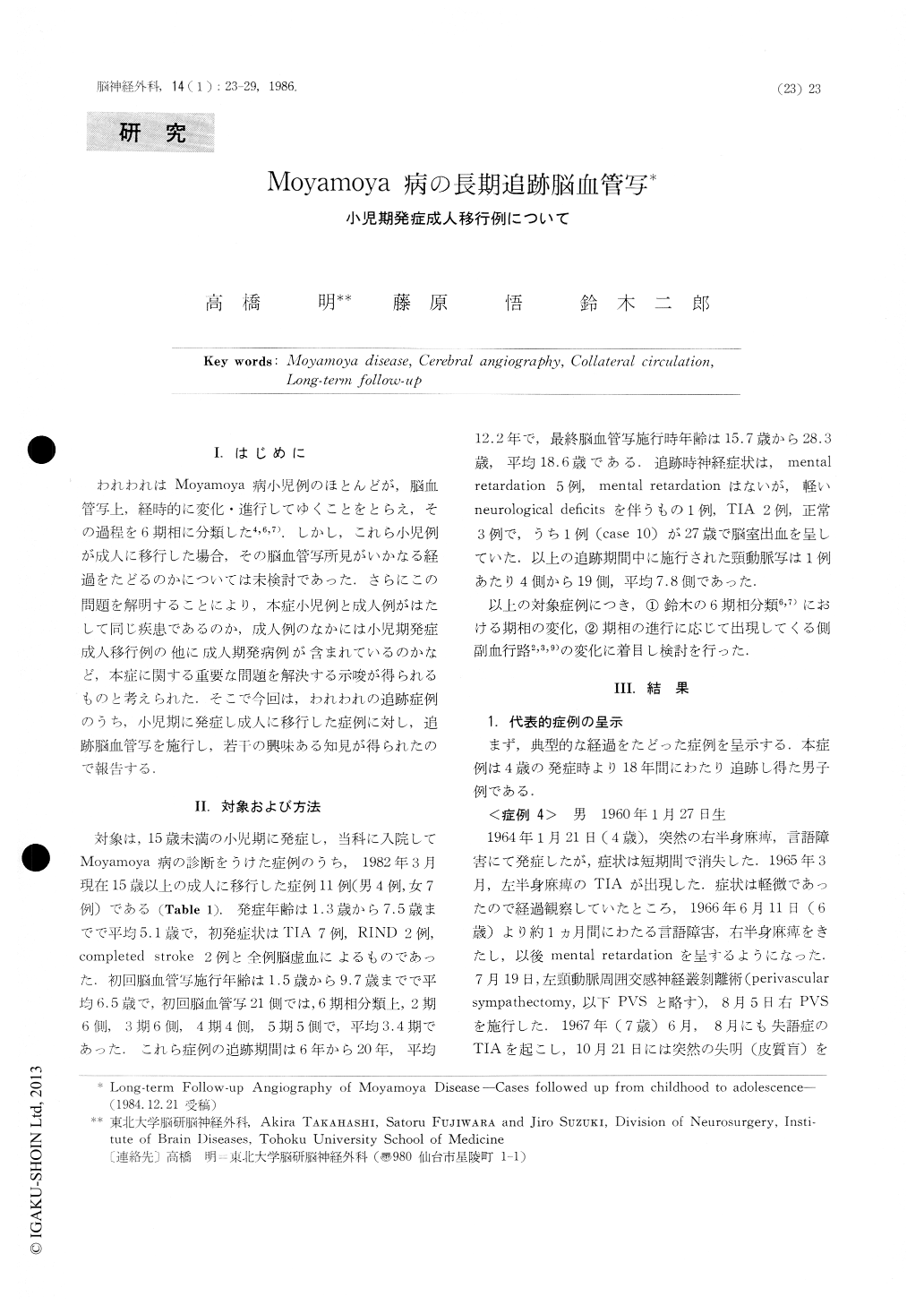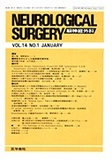Japanese
English
- 有料閲覧
- Abstract 文献概要
- 1ページ目 Look Inside
I.はじめに
われわれはMoyamoya病小児例のほとんどが,脳血管写上,経時的に変化・進行してゆくことをとらえ,その過程を6期相に分類した4,6,7).しかし,これら小児例が成人に移行した場合,その脳血管写所見がいかなる経過をたどるのかについては未検討であった.さらにこの問題を解明することにより,本症小児例と成人例がはたして同じ疾患であるのか,成人例のなかには小児期発症成人移行例の他に成人期発病例が含まれているのかなど,本症に関する重要な問題を解決する示唆が得られるものと考えられた.そこで今回は,われわれの追跡症例のうち,小児期に発症し成人に移行した症例に対し,追跡脳血管写を施行し,若干の興味ある知見が得られたので報告する.
We have reported the characteristic dynamic changes at the base of the brain in childhood Moya-moya disease in terms of follow-up angiography. So we have classified the angiographical findings of Mo-yamoya disease into six stages. However, there have been no report that proved these findings in long-term follow-up. On the other hand, these angio-graphical findings are mainly observed in children, we can seldom to find out any changes in adults.

Copyright © 1986, Igaku-Shoin Ltd. All rights reserved.


